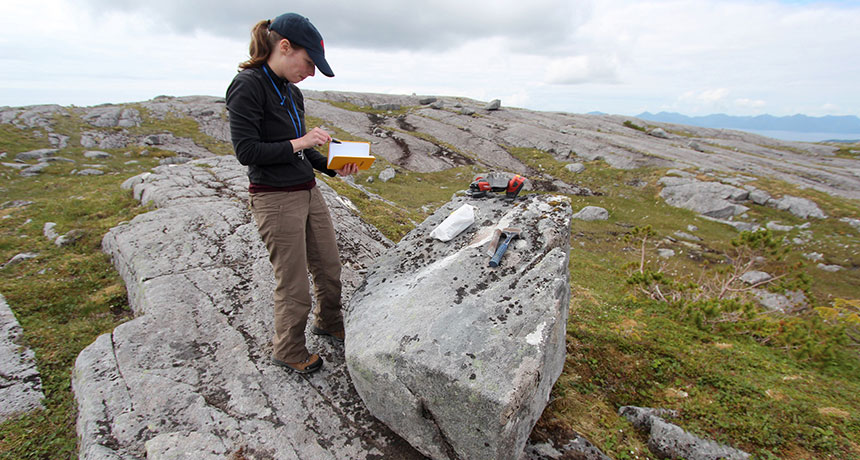The first Americans could have taken a coastal route into the New World

Ancient colonizers of the Americas could have traveled down Alaska’s Pacific coast in canoes or other sea vessels around 17,000 years ago, a new study finds.
At that time, toward the end of the last ice age, glaciers had just receded from a cluster of southern Alaskan islands, say geologist Alia Lesnek of the University at Buffalo in New York and colleagues. Life-supporting habitats appeared soon after the ice melted, the scientists report May 30 in Science Advances.
The study is the latest to weigh in on the debate over how humans spread into the New World after arriving from Asia and reaching as far as Florida and South America
by 14,500 years ago ( SN: 6/11/16, p. 8 ; SN: 12/26/15, p. 10 ). Previous work has hinted that an inland, ice-free corridor from Alaska through what’s now British Columbia and into the United States may not have contained enough vegetation and wildlife to enable human travel before around 12,600 years ago ( SN Online: 8/10/16 ). New geologic evidence supports the idea of a coastal route, though Lesnek’s team found no human bones or artifacts on the islands.
Measures of chemicals that accumulate in rock due to cosmic radiation once glaciers retreat provided age estimates for when four Alaskan islands lost their ice coat. An open pathway for coastal travelers probably existed along the entire southeastern Alaskan coast roughly 17,000 years ago, the scientists say. Radiocarbon dates for a ringed seal’s remains found on a southern Alaskan island indicate that the seal lived about 17,000 years ago, suggesting the area became habitable soon after glaciers left.